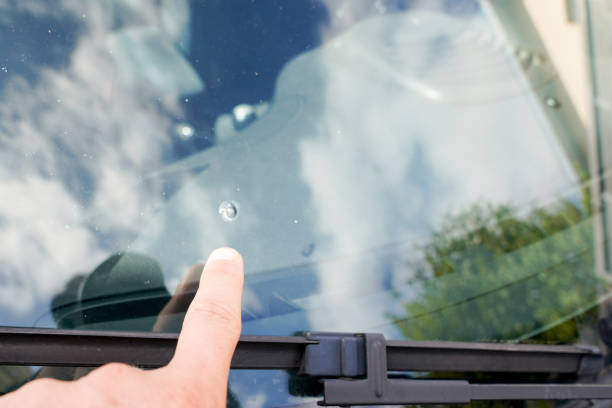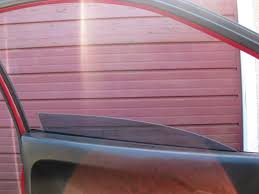Dealing with a Rental Car Windshield Chip: A Comprehensive Guide
Introduction
Renting a car provides the flexibility and convenience to explore new destinations, but it also means taking responsibility for the vehicle during your rental period. One common issue that renters may encounter is a windshield chip. While it can be a minor inconvenience, knowing how to handle it is essential to avoid any additional costs or disputes with the rental company. In this comprehensive guide, we'll explore everything you need to know about rental car windshield chips, including their causes, potential costs, and steps to take when faced with this situation. By the end of this guide, you'll be well-prepared to navigate the process effectively.

Chapter 1: Understanding Rental Car Windshield Chips
Before we dive into the details of dealing with a windshield chip in a rental car, it's essential to understand what these chips are and how they occur:
1.1 Causes of Windshield Chips
-
Road Debris: The most common cause of windshield chips is road debris such as rocks, gravel, or small objects kicked up by other vehicles.
-
Weather Conditions: Extreme weather, particularly hailstorms, can lead to windshield damage, including chips and cracks.
-
Temperature Fluctuations: Sudden temperature changes, like going from hot to cold or vice versa, can stress the windshield glass and result in chips or cracks.
1.2 Types of Windshield Chips
-
Bull's-Eye: This type of chip has a circular shape with a dark center point and radiating cracks. It's typically caused by a direct impact.
-
Star Break: Star breaks have multiple short cracks extending from the impact point, resembling a starburst.
-
Half-Moon or Partial Bull's-Eye: These chips appear as half circles and are caused by a less direct impact.
Chapter 2: Rental Car Insurance Coverage
One of the first considerations when dealing with a windshield chip in a rental car is whether your insurance coverage includes such damage:
2.1 Personal Auto Insurance
- Comprehensive Coverage: If you have comprehensive coverage on your personal auto insurance policy, it may extend to rental cars. Check your policy to confirm coverage.
2.2 Credit Card Coverage
- Credit Card Rental Car Insurance: Some credit cards offer rental car insurance as a cardholder benefit. Review your credit card terms and conditions to see if windshield chip repair is covered.
2.3 Rental Car Company Insurance*
- Collision Damage Waiver (CDW): Rental car companies typically offer CDW, which covers damage to the rental vehicle. However, it's essential to check the policy terms for specific coverage details related to windshield chips.
Chapter 3: Inspecting the Windshield Chip
Upon discovering a windshield chip in your rental car, it's crucial to assess its severity:
3.1 Chip Size and Location*
-
Size Matters: Determine the size of the chip. Smaller chips (less than the size of a quarter) are often repairable, while larger ones may require windshield replacement.
-
Location Considerations: The chip's location on the windshield is also crucial. Chips in the driver's line of sight may warrant more immediate attention.
3.2 Chip Condition*
- Check for Cracks: Inspect the chip for any accompanying cracks. If cracks have started to spread from the chip, it may no longer be repairable.
Chapter 4: Reporting the Windshield Chip to the Rental Company
Once you've assessed the windshield chip, it's time to take action:
4.1 Notify the Rental Company*
-
Prompt Reporting: Report the chip to the rental company as soon as you discover it. Delaying the notification could complicate the resolution process.
-
Documentation: Take clear photos of the chip from different angles and distances to document its condition at the time of discovery.
4.2 Contact the Rental Company's Customer Service*
- Use the Provided Contact Information: Refer to the rental agreement or the rental company's website for contact information. Call their customer service line to report the damage.
4.3 Ask About Their Procedure*
- Inquire About Their Process: Ask the rental company about their procedure for handling windshield chips. They will provide guidance on the next steps.
Chapter 5: Repairing a Rental Car Windshield Chip
Whether or not you have insurance coverage, you may want to consider repairing the chip to prevent it from spreading or worsening:
5.1 Rental Company's Recommendations*
- Follow the Rental Company's Advice: The rental company may recommend specific repair shops or procedures. It's a good idea to comply with their suggestions to avoid any disputes later.
5.2 Professional Windshield Repair*
-
Seek Professional Assistance: Windshield chip repair is best performed by professionals. They can assess the damage, determine if it's repairable, and carry out the necessary repairs.
-
Benefits of Repair: Repairing a chip early can prevent it from becoming a larger, more costly problem. It also maintains the structural integrity of the windshield.
Chapter 6: Replacing a Rental Car Windshield
Chapter 6 deals with the less common but still crucial scenario of having to replace a rental car windshield. Here's a more detailed breakdown:
6.1 Rental Company's Decision
-
Assessment by Rental Company: If the rental company determines that the chip's damage is too extensive or is located in a critical area, they may advise windshield replacement.
-
Compliance with Rental Company: It's essential to comply with the rental company's guidance in this situation. Disregarding their instructions could result in additional charges or disputes.
6.2 Professional Replacement
-
Choosing the Right Shop: If you are responsible for windshield replacement, select a reputable auto glass shop. Look for one that has experience working with rental cars to ensure a seamless and professional job.
-
Insurance Considerations: If you have insurance coverage that includes windshield replacement, confirm that the chosen shop accepts your insurance. This prevents unexpected out-of-pocket expenses.
6.3 Coordination with Rental Company*
- Communication: Maintain open communication with the rental company throughout the replacement process. Inform them of the repair or replacement timeline to ensure a smooth return process.
Chapter 7: Preventing Rental Car Windshield Chips
Chapter 7 focuses on proactive measures to reduce the risk of windshield chips while driving a rental car:
7.1 Safe Following Distance*
-
Safe Space: Emphasize the importance of maintaining a safe following distance from other vehicles. This distance reduces the chances of your car being struck by debris thrown up by the vehicle in front.
-
Reaction Time: Explain how a safe following distance provides more reaction time, allowing drivers to swerve or brake if they spot debris on the road.
7.2 Avoid Construction Zones*
-
Planning Routes: Encourage renters to plan routes that avoid construction zones or areas with loose gravel and debris whenever possible.
-
Detour Options: Explain how detouring around construction can help protect the rental car's windshield.
7.3 Protective Driving*
-
Defensive Driving Tips: Share defensive driving tips, such as scanning the road ahead, anticipating potential hazards, and being prepared to react quickly.
-
Paying Attention: Stress the importance of staying alert and focused while driving. Remind renters that distracted driving can lead to accidents caused by road debris.
Chapter 8: Returning the Rental Car
Chapter 8 addresses the final steps when returning the rental car, particularly focusing on the windshield chip:
8.1 Documentation*
-
Providing Evidence: Reiterate the importance of presenting all documentation related to the windshield chip. This includes photos taken when reporting the damage and any receipts for repair or replacement.
-
Clarification: Emphasize that clear documentation helps avoid disputes and ensures that the rental company accurately assesses the damage's status.
8.2 Inspection*
-
Joint Inspection: Describe the joint inspection process that typically occurs when returning a rental car. A rental company representative will inspect the vehicle's condition alongside the renter.
-
Review Windshield Status: During the inspection, ensure that the rental company representative acknowledges and correctly documents the chip's repair or replacement on the rental agreement.
Chapter 9: Conclusion - A Responsible Approach to Rental Car Windshield Chips
In Chapter 9, we wrap up the guide by reinforcing the responsible approach to handling rental car windshield chips:
9.1 Proactive Responsibility*
-
Responsibility: Highlight the importance of taking proactive responsibility when dealing with windshield chips in rental cars. Being vigilant and following the appropriate procedures is key.
-
Safety and Cost-Effective Measures: Remind renters that a responsible approach not only ensures their safety but can also be cost-effective in preventing unexpected charges.
9.2 Communication with Rental Company*
- Effective Communication: Stress the significance of maintaining open and effective communication with the rental company. Following their guidance and keeping them informed can lead to smoother resolutions.
9.3 Documentation and Accountability*
- Documentation as Accountability: Reinforce that documentation serves as accountability, helping renters avoid disputes and misunderstandings when returning the vehicle.
By delving into the finer details of these chapters, renters can navigate the process of handling rental car windshield chips with confidence and responsibility, ensuring a smooth and cost-effective rental experience.



